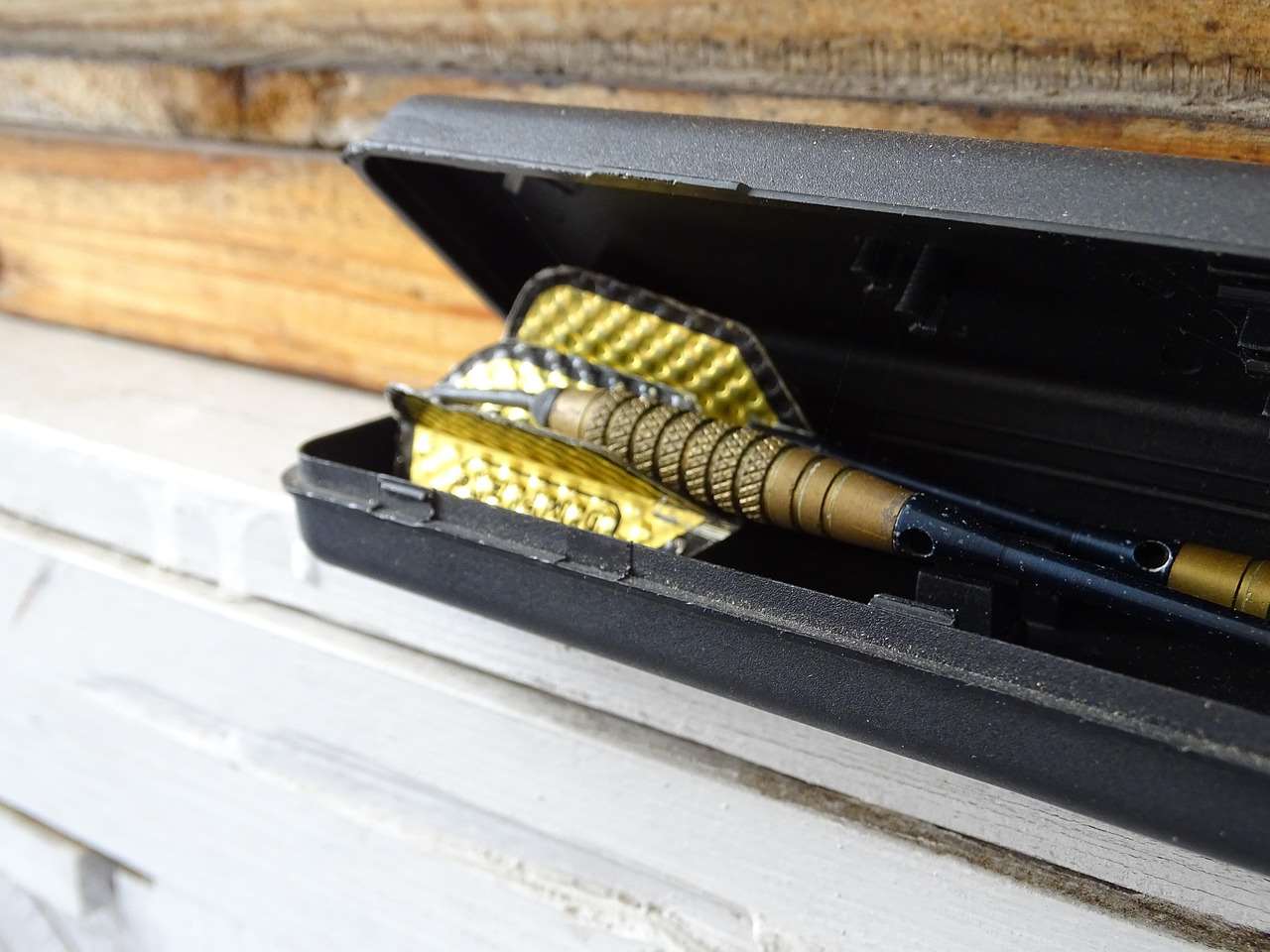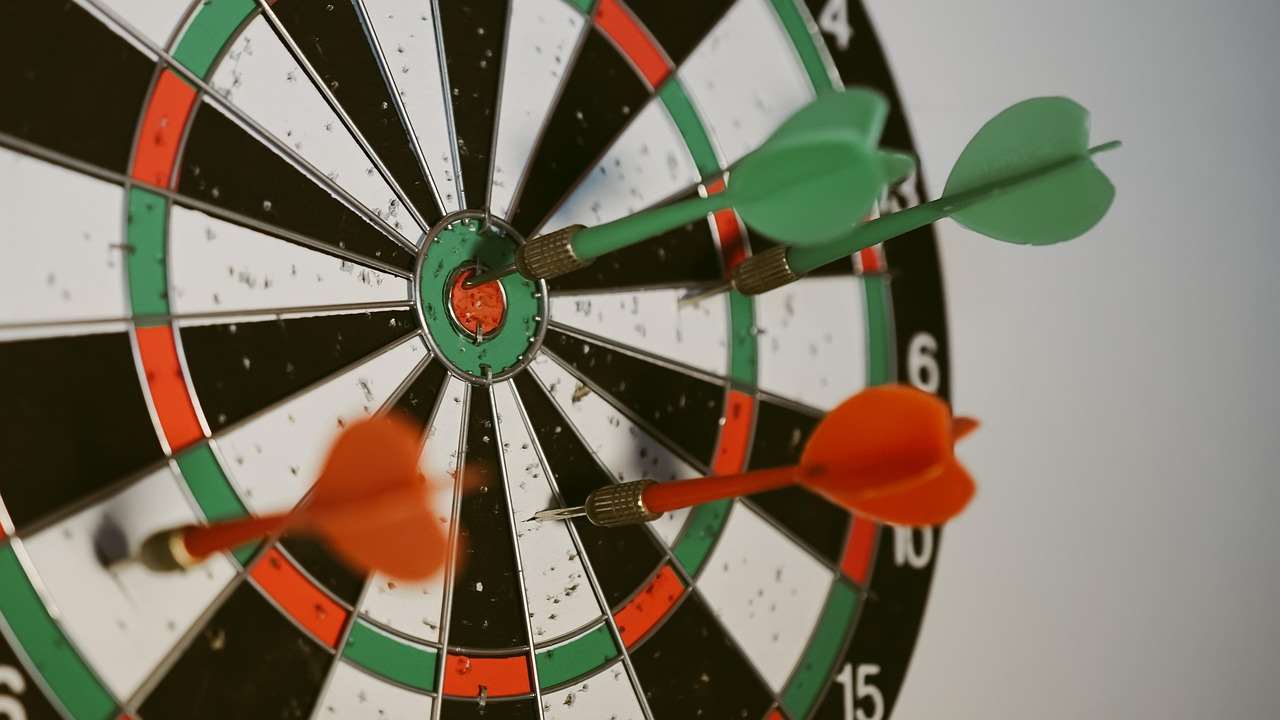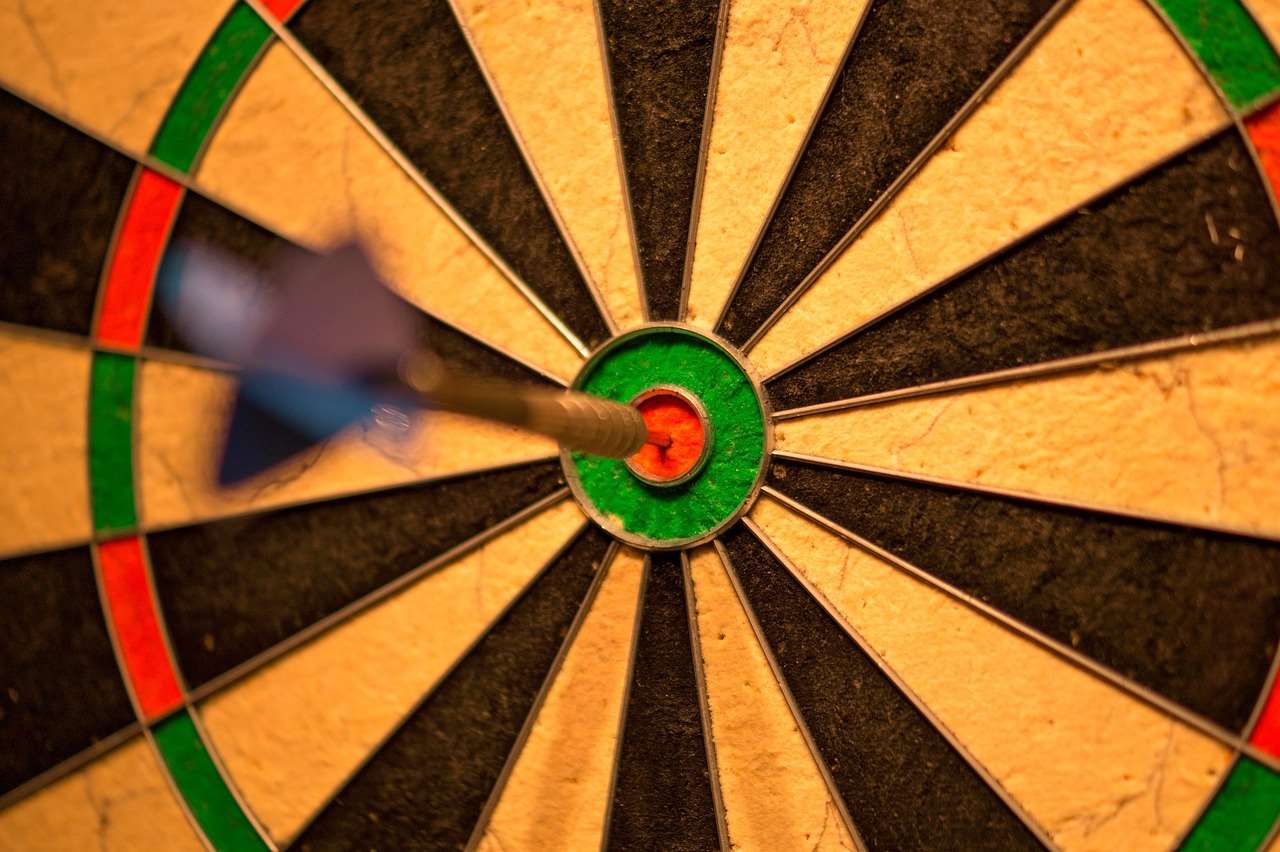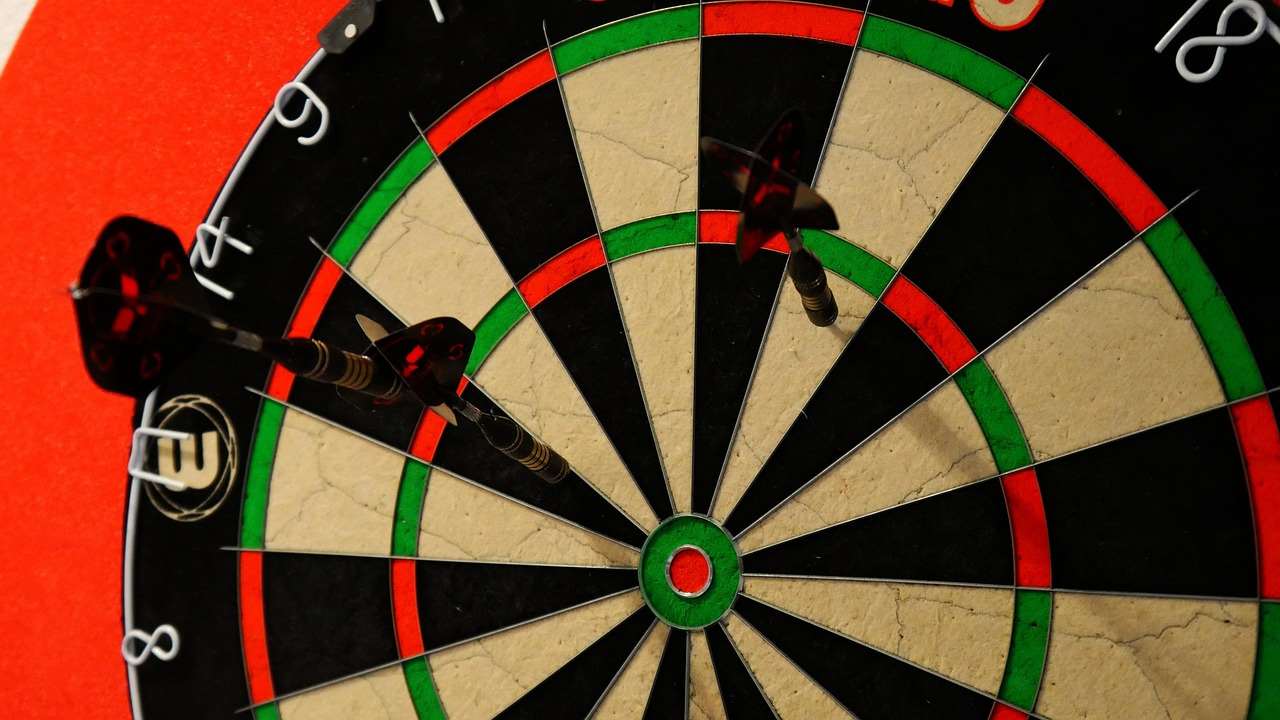Struggling with a broken dart shaft stuck in your barrel? The key to successful dart shaft removal is using the right tools and techniques to avoid damaging your darts. This guide covers various methods for safely extracting broken shafts and preventing future issues, ensuring your darts stay in top playing condition.
⚠️ Still Using Pen & Paper (or a Chalkboard)?! ⚠️
Step into the future! The Dart Counter App handles all the scoring, suggests checkouts, and tracks your stats automatically. It's easier than you think!
Try the Smart Dart Counter App FREE!Ready for an upgrade? Click above!
Understanding the Problem: Why Dart Shafts Break
Dart shafts, despite being small, are a crucial part of your dart setup. They connect the flight to the barrel and influence the dart’s trajectory. Several factors contribute to shaft breakage, understanding these can help prevent future headaches:
- Impact: The most common cause. Darts colliding in the board often lead to shaft fractures, especially if one dart hits the shaft of another.
- Material Fatigue: Over time, the constant stress of throwing weakens the shaft material, making it more prone to breaking.
- Over-tightening: While a secure shaft is essential, over-tightening can stress the threads and lead to cracking.
- Low-Quality Shafts: Cheaper shafts are often made from less durable materials, making them more susceptible to breakage. Consider investing in higher-quality shafts for longevity.
Recognizing these causes is the first step in minimizing the need for frequent dart shaft removal.

Methods for Dart Shaft Removal: A Step-by-Step Guide
When you find yourself needing to perform dart shaft removal, having the right tools and knowing the correct techniques is paramount. Here are several methods, ranging from simple to more advanced, that you can use:
Method 1: Using Dart Shaft Removal Tools
The most effective way to remove a broken shaft is with a dedicated dart shaft removal tool. These tools are specifically designed to grip the broken shaft and extract it without damaging the barrel.
- Insert the Tool: Carefully insert the pointed end of the tool into the broken shaft.
- Grip and Twist: Firmly grip the tool and twist it in a counter-clockwise direction. This will help to loosen the shaft.
- Pull Out: Once loosened, gently pull the tool (and the shaft) out of the barrel.
Method 2: Pliers and Tweezers
If you don’t have a dedicated tool, pliers or tweezers can sometimes work, especially if a small portion of the shaft is still protruding from the barrel. This method, though, carries a higher risk of damaging the threads. You can purchase a dart counter buy, and a dart shaft removal tool if you want the full setup.
- Grip the Shaft: Use the pliers or tweezers to firmly grip the exposed portion of the shaft.
- Twist and Pull: Gently twist the shaft while simultaneously pulling it out. Avoid excessive force.
- Caution: Be very careful not to scratch or damage the barrel’s threading.
Method 3: The Screw Method
This method involves using a small screw to essentially “grab” the broken shaft from within. It’s a bit more involved, but effective if other methods fail.
- Find a Suitable Screw: Choose a small, self-tapping screw that is slightly smaller in diameter than the inside of the broken shaft.
- Insert and Twist: Carefully insert the screw into the center of the broken shaft and gently twist it in a clockwise direction. The screw should “bite” into the plastic.
- Pull Out: Once the screw is securely embedded, pull it (and the shaft) out of the barrel.
Method 4: Using a Hot Needle (Advanced)
Caution: This method involves heat and should be performed with extreme care to avoid burns. It can be effective for melting the plastic shaft and allowing easier dart shaft removal.
- Heat the Needle: Heat a needle (using a lighter or other heat source) until it is hot.
- Melt the Shaft: Carefully insert the hot needle into the center of the broken shaft, melting a small portion of the plastic.
- Let it Cool Slightly: Allow the plastic to cool slightly. This will help the needle adhere to the shaft.
- Pull Out: Gently pull the needle (and the shaft) out of the barrel.

Preventing Future Shaft Breakage: Tips and Best Practices
While knowing how to perform dart shaft removal is useful, preventing the issue in the first place is even better. Here are some tips to minimize shaft breakage and extend the life of your darts:
- Use Shaft Rings: These small metal rings fit around the base of the shaft and help to protect it from impact during collisions.
- Choose Durable Shafts: Invest in shafts made from stronger materials like aluminum or carbon fiber. These are more resistant to breakage than standard plastic shafts.
- Tighten Shafts Properly: Avoid over-tightening shafts, as this can weaken the threads. Tighten them just enough to secure them in place.
- Regular Inspection: Regularly inspect your shafts for signs of wear or cracking. Replace them before they break completely.
- Use a Dart Case: Storing your darts in a case protects them from damage during transport and storage.
By following these preventative measures, you can significantly reduce the frequency of dart shaft removal and keep your darts in optimal condition.
Choosing the Right Dart Shafts: Materials and Lengths
Selecting the right dart shafts for your throwing style is crucial for both performance and durability. Different materials and lengths offer varying benefits.
Shaft Materials
- Plastic/Nylon Shafts: These are the most common and affordable type. They are lightweight and offer good flexibility but are also the most prone to breakage.
- Aluminum Shafts: Aluminum shafts are more durable than plastic and offer a more consistent flight path. They can be slightly heavier and more expensive.
- Carbon Fiber Shafts: Carbon fiber shafts are the most durable and lightweight option. They are also the most expensive. They offer excellent rigidity and resistance to breakage.
- Rotating Shafts: Rotating shafts are designed to spin upon impact, which can reduce deflections and increase scoring potential.
Shaft Lengths
- Short Shafts: Short shafts (e.g., extra short, short) generally make the dart fly at a steeper angle and are often preferred by players who throw with a higher arc.
- Medium Shafts: Medium shafts are the most common length and offer a good balance of stability and control. They are suitable for a wide range of throwing styles.
- Long Shafts: Long shafts (e.g., long, extra long) tend to make the dart fly flatter and straighter. They are often preferred by players who throw with a lower arc.
Experimenting with different shaft materials and lengths can help you find the perfect combination for your individual throwing style and minimize the need for dart shaft removal due to breakage caused by mismatched equipment.

Dealing with Stripped Threads: Repair and Prevention
Sometimes, the issue isn’t a broken shaft but stripped threads in the barrel or on the shaft itself. Stripped threads make it impossible to securely attach the shaft, impacting accuracy. Understanding how to address this problem is vital.
Repairing Stripped Threads in the Barrel
Repairing stripped threads in a dart barrel is difficult and often requires specialized tools and expertise. In most cases, it’s more cost-effective to replace the barrel or the entire set of darts. However, there are a few temporary solutions:
- Thread Repair Tape: Applying Teflon tape (plumber’s tape) to the shaft threads can sometimes create a tighter fit and compensate for slightly stripped threads.
- Thread Locking Compound: A small amount of thread-locking compound (e.g., Loctite) can be applied to the shaft threads to help secure it in the barrel. Use this sparingly and with caution, as it can make future dart shaft removal more difficult.
Preventing Thread Stripping
Prevention is key to avoiding stripped threads. Here are some tips:
- Avoid Over-Tightening: As mentioned earlier, over-tightening is a major cause of stripped threads.
- Use Proper Shafts: Ensure that you are using shafts with the correct thread size for your barrels (usually 2BA).
- Clean Threads Regularly: Dirt and debris can accumulate in the threads, making it more difficult to tighten the shaft properly. Clean the threads regularly with a soft brush or cloth.
- Consider Conversion Points: Conversion points can be attached to soft tip darts to use them on a bristle dartboard, potentially increasing wear on threads.
Taking care of your dart threads will significantly reduce the likelihood of encountering this frustrating problem and extend the lifespan of your darts.
Dart Maintenance: Beyond Dart Shaft Removal
Dart shaft removal is just one aspect of proper dart maintenance. Keeping your darts in top condition requires a holistic approach.
Cleaning Your Darts
Regular cleaning helps to maintain the grip and appearance of your darts. Use a soft cloth and mild soap to clean the barrels. Avoid harsh chemicals or abrasive cleaners. Darts line up blackpool and should be kept clean.
Sharpening Your Points
Dull points can lead to bounce-outs and damage to the dartboard. Use a dart sharpener to keep your points sharp and prevent them from becoming burred. Sharpening helps the darts stick properly.
Replacing Flights
Worn or damaged flights can significantly affect the dart’s trajectory. Replace your flights regularly to ensure consistent flight characteristics. Try the best darts scoring app (https://dartcounterapp.com/) to keep track of your scores.
Storing Your Darts Properly
As mentioned before, storing your darts in a case protects them from damage. Choose a case that is designed to hold your darts securely and prevent them from rubbing against each other. Also be sure to note the panini darts release date so you can upgrade your collection.

Advanced Techniques: When Dart Shaft Removal Becomes a Challenge
Sometimes, despite your best efforts, a broken shaft remains stubbornly lodged in the barrel. In these cases, more advanced techniques may be required. This section discusses some solutions, but remember to proceed with caution to avoid damaging your equipment.
Using Penetrating Oil
Penetrating oil can help to loosen a stuck shaft by dissolving any corrosion or debris that may be binding it in place. Apply a small amount of penetrating oil (such as WD-40) to the broken shaft and let it sit for several minutes before attempting to remove it. Wipe away any excess oil before throwing the dart again.
The “Super Glue” Method (Use with Extreme Caution)
Warning: This method should only be used as a last resort and carries a significant risk of permanently bonding the shaft to the barrel. Apply a very small drop of super glue to the end of a spare shaft. Carefully insert the glued shaft into the broken shaft and hold it in place until the glue sets. Once the glue is dry, gently twist and pull the spare shaft to remove the broken one. If this method fails, it may be impossible to remove the broken shaft without damaging the barrel.
Seeking Professional Help
If you are unable to remove a broken shaft using any of the above methods, consider seeking professional help from a dart shop or experienced dart player. They may have specialized tools or techniques that can help. Or, you can research ‘is darts counter down’, if you are planning on calling out for assistance. They might be able to help resolve the issue with other players.
Remember, patience and persistence are key. Avoid using excessive force, as this can damage the barrel and make dart shaft removal even more difficult. If you are unsure about any of these techniques, it is best to seek professional assistance.

Conclusion: Mastering Dart Shaft Removal and Maintenance
Dart shaft removal, though a common occurrence, doesn’t have to be a frustrating experience. By understanding the causes of shaft breakage, employing the right tools and techniques, and practicing preventative maintenance, you can minimize the need for shaft removal and keep your darts in optimal playing condition. Remember to choose the right shaft materials and lengths for your throwing style, and always handle your darts with care. So, what are you waiting for? Get out there, practice your technique, and maintain your darts for the ultimate playing experience!
Hi, I’m Dieter, and I created Dartcounter (Dartcounterapp.com). My motivation wasn’t being a darts expert – quite the opposite! When I first started playing, I loved the game but found keeping accurate scores and tracking stats difficult and distracting.
I figured I couldn’t be the only one struggling with this. So, I decided to build a solution: an easy-to-use application that everyone, no matter their experience level, could use to manage scoring effortlessly.
My goal for Dartcounter was simple: let the app handle the numbers – the scoring, the averages, the stats, even checkout suggestions – so players could focus purely on their throw and enjoying the game. It began as a way to solve my own beginner’s problem, and I’m thrilled it has grown into a helpful tool for the wider darts community.